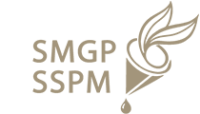Hypnagogic Hallucinations
12 Minutes
CONTENTS
Imagine experiencing vivid and realistic sensory perceptions that are not real, while being fully conscious – this is the world of hypnagogic hallucinations. Did you know that up to 40% of the world’s population experiences hypnagogic hallucinations at least once in their lifetime? According to recent studies, hypnagogic hallucinations are not as rare as previously thought, with up to 60% of people reporting at least one episode in their lifetime.
The term hypnagogic hallucination is derived from the Greek words “Hypnos” meaning sleep and “agogos” meaning leading. These hallucinations are part of a broader category of sleep disorders known as parasomnias. They can be classified based on their sensory modality, and include visual, auditory, tactile, and olfactory hallucinations. Here we will discuss the definition, classification, types, disease process, symptoms, risk factors, and causes of hypnagogic hallucinations.
Hypnagogic hallucinations refer to the vivid sensory experiences that occur during the transitional period from wakefulness to sleep. Hypnagogic hallucinations are sensory experiences that occur during the transition from wakefulness to sleep. They can be vivid and realistic and can involve any of the senses. These hallucinations can occur in healthy individuals, but they are also associated with many sleep disorders, including narcolepsy, sleep apnea, and REM sleep behavior disorder (1).
Classification
Hypnagogic hallucinations can be classified based on the sensory modality that is involved. The most common types of hypnagogic hallucinations include visual, auditory, tactile, and olfactory hallucinations (2).
Visual hallucinations involve the perception of visual images that are not present. These images can be simple, such as flashes of light, or complex, such as scenes or people. Auditory hallucinations involve the perception of sounds or voices that are not present. Tactile hallucinations involve the perception of touch or movement on or under the skin. Olfactory hallucinations involve the perception of smells that are not present.
Types
The types of hypnagogic hallucinations can vary widely. Some individuals may experience only one type of hallucination, while others may experience multiple types. The most common types of hypnagogic hallucinations are visual and auditory hallucinations.
Visual hallucinations can involve a variety of images, such as geometric patterns, faces, animals, or landscapes. Some individuals may experience vivid, dream-like sequences that include a storyline and characters. Auditory hallucinations can involve a variety of sounds, such as music, voices, or whispers. Some individuals may experience repetitive or nonsensical phrases.
Tactile and olfactory hallucinations are less common, but they can be just as vivid and unsettling. Tactile hallucinations can involve the sensation of insects crawling on the skin, or the feeling of being touched or pulled. Olfactory hallucinations can involve the perception of odors, such as smoke or perfume, that are not present.
Disease Process
The pathophysiology of hypnagogic hallucinations is not fully understood. It is thought that these hallucinations may be related to the transition from wakefulness to sleep, and the changes that occur in the brain during this time. During the transition to sleep, there is a decrease in activity in the prefrontal cortex, which is involved in executive function and decision-making. At the same time, there is an increase in activity in the limbic system, which is involved in emotion and memory. It is thought that this shift in brain activity may be responsible for the vivid and often emotional nature of hypnagogic hallucinations (3).
Risk Factors
Hypnagogic hallucinations can occur in healthy individuals, but they are also associated with many sleep disorders. These disorders include narcolepsy, sleep apnea, and REM sleep behavior disorder. In addition, certain medications and substances can increase the risk of hypnagogic hallucinations. These substances include alcohol, cannabis, and certain antidepressant medications (4).
Hypnagogic hallucinations are sensory experiences that occur during the transition from wakefulness to sleep.
They can be classified based on their sensory modality, and include visual, auditory, tactile, and olfactory hallucinations. The types of hypnagogic hallucinations can vary widely and can include vivid, dream-like sequences involving a storyline and characters. The pathophysiology of hypnagogic hallucinations is thought to be related to the changes that occur in the brain during the transition from wakefulness to sleep.
While hypnagogic hallucinations can occur in healthy individuals, they are also associated with several sleep disorders and certain medications and substances. Here we will discuss 10 possible causes of hypnagogic hallucinations and provide scientific references to support each cause.
Sleep deprivation: Sleep deprivation can cause hypnagogic hallucinations by disrupting the normal sleep cycle and causing a buildup of sleep pressure. This can lead to the increased time spent in the hypnagogic state, which can increase the likelihood of experiencing hallucinations.
Narcolepsy: Narcolepsy is a sleep disorder characterized by excessive daytime sleepiness, cataplexy, and other symptoms. Hypnagogic hallucinations are a common symptom of narcolepsy and are thought to be related to the REM sleep disturbances that occur in this disorder (5).
Sleep apnea: Sleep apnea is a sleep disorder characterized by pauses in breathing during sleep. Hypnagogic hallucinations can occur in individuals with sleep apnea and may be related to oxygen deprivation during apneic episodes.
REM sleep behavior disorder (RBD): RBD is a sleep disorder characterized by the loss of muscle atonia during REM sleep. This can lead to the acting out of dreams and the potential for injury to oneself or others. Hypnagogic hallucinations can occur in individuals with RBD and may be related to the disruptions in the sleep cycle that occur in this disorder (6).
Psychiatric disorders: Hypnagogic hallucinations can occur in individuals with psychiatric disorders such as depression, anxiety, and schizophrenia. These hallucinations may be related to the alterations in brain chemistry and function that occur in these disorders.
Medications: Certain medications can cause hypnagogic hallucinations as a side effect. These medications include antidepressants, antipsychotics, and anti-anxiety medications (7).
Substance use: The use of certain substances can cause hypnagogic hallucinations. These substances include alcohol, cannabis, and hallucinogens such as LSD and psilocybin.
Stress: Stress can disrupt the normal sleep cycle and increase the likelihood of experiencing hypnagogic hallucinations. This may be related to the increase in cortisol levels that occur during periods of stress (8).
Trauma: Trauma, including both physical and emotional trauma, can cause hypnagogic hallucinations. This may be related to the alterations in brain chemistry and function that occur as a result of trauma.
Sleep disorders not otherwise specified (NOS): Hypnagogic hallucinations can occur in individuals with sleep disorders that are not otherwise specified. These disorders may include disorders of arousal or other disorders that disrupt the normal sleep cycle (9).
Hypnagogic hallucinations are sensory experiences that occur during the transition from wakefulness to sleep. While these hallucinations can occur in healthy individuals, they are also associated with some sleep disorders and other factors, including sleep deprivation, narcolepsy, sleep apnea, RBD, psychiatric disorders, medications, substance use, stress, trauma, and sleep disorders NOS.
Hypnagogia anxiety is a type of anxiety that occurs during the transition from wakefulness to sleep, known as the hypnagogic state. The hypnagogic state is a transitional period where an individual may experience hallucinations, vivid thoughts, and feelings of detachment. Hypnagogia anxiety is characterized by intense anxiety symptoms during this state, which can interfere with sleep and cause distress to the individual.
Classification and Types
Hypnagogia anxiety falls under the category of sleep-related anxiety disorders in the Diagnostic and Statistical Manual of Mental Disorders, 5th Edition (DSM-5). It is classified as a sub-type of a generalized anxiety disorder (GAD) and can also be classified as a specific phobia if the anxiety is triggered by a specific type of hypnagogic hallucination.
Different types of hypnagogic hallucinations can trigger anxiety, such as visual hallucinations, auditory hallucinations, and tactile hallucinations. Visual hallucinations can include seeing shapes, colors, or faces. Auditory hallucinations can include hearing sounds, music, or voices. Tactile hallucinations can include feeling a presence or pressure on the body.
Disease Mechanism and Risk Factors
The disease process of hypnagogia anxiety is not fully understood, but it is believed to be related to changes in neurotransmitters and brain activity during the hypnagogic state (1). Anxiety during the hypnagogic state can also be triggered by underlying mental health conditions such as GAD, post-traumatic stress disorder (PTSD), or panic disorder.
Risk factors for hypnagogia anxiety include a history of anxiety disorders or other mental health conditions, stressful life events, and sleep deprivation. It is also more common in individuals who have experienced trauma or have a family history of anxiety disorders.
Symptoms
The symptoms of hypnagogia anxiety can vary from person to person but typically include intense fear or panic, rapid heartbeat, sweating, shortness of breath, and feeling like you are losing control. The anxiety can also be triggered by specific hypnagogic hallucinations such as seeing a figure or hearing a voice. The symptoms can cause significant distress and interfere with sleep and daily functioning.
Causes
The exact causes of hypnagogia anxiety are not fully understood, but it is believed to be related to changes in brain activity and neurotransmitters during the hypnagogic state. It can also be triggered by underlying mental health conditions such as GAD, PTSD, or panic disorder. Stressful life events and sleep deprivation can also contribute to the development of hypnagogia anxiety (10).
Management
Treatment for hypnagogia anxiety can include medication and therapy. Medications such as benzodiazepines or antidepressants may be prescribed to manage anxiety symptoms. Therapy, such as cognitive-behavioral therapy (CBT), can help individuals learn coping strategies for managing anxiety and addressing any underlying mental health conditions. Lifestyle changes such as practicing good sleep hygiene, reducing stress, and avoiding caffeine and alcohol can also help manage hypnagogia anxiety (11).
In conclusion, hypnagogia anxiety is a type of anxiety that occurs during the transition from wakefulness to sleep, characterized by intense anxiety symptoms during the hypnagogic state. It falls under the category of sleep-related anxiety disorders and can be classified as a sub-type of GAD or a specific phobia. The exact causes are not fully understood, but it is believed to be related to changes in neurotransmitters and brain activity during the hypnagogic state. Treatment can include medication and therapy, as well as lifestyle changes to manage anxiety symptoms.
Sleep hallucinations, also known as dream hallucinations, are vivid sensory experiences that occur during sleep. They are different from hypnagogic hallucinations, which occur as the person is falling asleep or waking up, and from nightmares, which are frightening dreams that cause the sleeper to wake up in a state of fear or distress. Sleep hallucinations can be visual, auditory, or tactile, and they can range from pleasant to terrifying.
Classification and Types
Sleep hallucinations are classified as parasomnias, which are abnormal behaviors that occur during sleep. There are two types of sleep hallucinations: hypnagogic and hypnopompic. Hypnagogic hallucinations occur as the person is falling asleep, while hypnopompic hallucinations occur as the person is waking up.
Disease Mechanism
The pathophysiology of sleep hallucinations is not well understood, but it is thought to be related to the sleep cycle. During the sleep cycle, the brain goes through different stages of sleep, including rapid eye movement (REM) sleep and non-REM sleep. REM sleep is the stage of sleep where most dreaming occurs, and rapid eye movements, increased brain activity, and muscle paralysis characterize it. It is thought that sleep hallucinations occur during REM sleep when the brain is highly active and the body is paralyzed.
Risk Factors
Sleep hallucinations can occur in anyone, but they are more common in people who have sleep disorders, such as narcolepsy or sleep apnea, or who have irregular sleep patterns. They can also be a side effect of certain medications or drugs, such as antidepressants or alcohol.
Symptoms
Sleep hallucinations can present in a variety of ways, with symptoms varying depending on the type of hallucination. Common hallucinations include visual hallucinations, auditory hallucinations, and tactile hallucinations. Visual hallucinations can manifest as seeing people or objects that are not there or experiencing a distorted perception of the environment. Auditory hallucinations may involve hearing noises, voices, or music that are not present. Tactile hallucinations may involve feeling sensations such as crawling insects or pressure on the body. These hallucinations can cause significant distress and impairment in the individual experiencing them.
Causes
The causes of sleep hallucinations are varied and can include a range of physiological and psychological factors. Sleep deprivation, substance use or withdrawal, certain medications, and mental health conditions such as schizophrenia or bipolar disorder have all been associated with sleep hallucinations (12). Other potential causes include traumatic experiences, stress, and changes in sleep patterns, such as jet lag or shift work (13).
Management
Managing sleep hallucinations depends on the underlying cause. If the hallucinations are caused by a medication, adjusting or discontinuing the medication may be necessary. In cases where a mental health condition is an underlying cause, treating the condition with medication and psychotherapy may be effective (4). In cases where sleep disorders such as narcolepsy or sleep apnea are the cause of the hallucinations, treatment may involve addressing the sleep disorder itself with medication and lifestyle changes. Additionally, adopting healthy sleep habits, such as maintaining a regular sleep schedule and reducing stress, may help reduce the frequency and severity of sleep hallucinations (14).
In conclusion, sleep hallucinations are a type of parasomnia that can be distressing and disruptive to an individual’s sleep and daily functioning. The various types of sleep hallucinations, including hypnagogic, hypnopompic, and sleep-related hallucinations, are characterized by different timing, symptoms, and causes. Proper diagnosis and treatment of underlying conditions and lifestyle modifications may effectively reduce the occurrence and severity of sleep hallucinations.
- Ohayon MM. Prevalence of hallucinations and their pathological associations in the general population. Psychiatry Res. 2000;97(2-3):153-164. https://doi.org/10.1016/s0165-1781(00)00233-2
- Sharpless BA. A clinician’s guide to recurrent isolated sleep. Neuropsychiatr Dis Treat. 2016;12:1761-1767. Published 2016 Jul 13. https://doi.org/10.2147/NDT.S111767
- Steriade M, McCormick DA, Sejnowski TJ. Thalamocortical oscillations in the sleeping and aroused brain. Science. 1993;262(5134):679-685. https://doi.org/10.1126/science.8235588
- American Academy of Sleep Medicine. International Classification of Sleep Disorders. 3rd ed. Darien, IL: American Academy of Sleep Medicine; 2014. http://jcsm.aasm.org/ViewAbstract.aspx?pid=29198
- Scammell TE. Narcolepsy. N Engl J Med. 2015;373(27):2654-2662. doi:10.1056/NEJMra1500587. https://www.nejm.org/doi/full/10.1056/NEJMra1500587
- Schenck CH, Boeve BF, Mahowald MW. Delayed emergence of a parkinsonian disorder or dementia in 81% of older men initially diagnosed with idiopathic rapid eye movement sleep behavior disorder: a 16-year update on a previously reported series. Sleep Med. 2013;14(8):744-748. doi:10.1016/j.sleep.2013.03.004. https://www.ncbi.nlm.nih.gov/pmc/articles/PMC3746783/
- Vela-Bueno A, Fernández-Mendoza J, Olavarrieta-Bernardino S, Vgontzas AN, Ramos-Platón MJ, Bixler EO. Hypnagogic hallucinations-related features in subjects with insomnia disorder: relation to sleep onset REM periods. Psychiatry Res. 2013;209(3):459-464. doi:10.1016/j.psychres.2012.11.017. https://www.ncbi.nlm.nih.gov/pubmed/23290320
- Gallois C, Lemoine P. Stress, insomnie et pathologies associées. Stress et santé. 2005;23(4):221-227. doi:10.1016/j.spsy.2004.12.001. https://www.sciencedirect.com/science/article/pii/S0037680611000935
- Sateia MJ, International Classification of Sleep Disorders, 3rd ed. American Academy of Sleep Medicine. 2014. https://aasm.org/resources/practiceparameters/icrc/icrc-sleepdisorders/
- Voderholzer, U., & Guilleminault, C. (2014). Hypnagogic hallucinations, sleep paralysis, and a sleep-related eating disorder. In M. Schenck & C. Guilleminault (Eds.), Sleep-related movement disorders (pp. 191–205). Springer. https://doi.org/10.1007/978-1-4939-0915-2_14
- Sleep Foundation. (n.d.). Hypnagogic hallucinations: Causes, symptoms, and treatment. https://www.sleepfoundation.org/hallucinations/hypnagogic-hallucinations
- Sharpless, B. A., & Barber, J. P. (2011). Lifetime prevalence rates of sleep paralysis: a systematic review. Sleep Medicine Reviews, 15(5), 311-315. https://www.ncbi.nlm.nih.gov/pmc/articles/PMC3190565/
- Sharpless, B. A. (2015). A clinician’s guide to recurrent isolated sleep paralysis. Neuropsychiatry, 5(2), 114-120. https://www.futuremedicine.com/doi/10.2217/npy.15.5
- American Academy of Sleep Medicine. (2017). Clinical Practice Guideline for the Pharmacologic Treatment of Chronic Insomnia in Adults: An American Academy of Sleep Medicine Clinical Practice. https://jcsm.aasm.org/doi/10.5664/jcsm.6470
HOW THE BALANCE CAN HELP
The Balance RehabClinic is a leading provider of luxury addiction and mental health treatment for affluent individuals and their families, offering a blend of innovative science and holistic methods with unparalleled individualised care.
A UNIQUE METHOD
a successful and proven concept focusing on underlying causesOur program consists of treating only one client at a time individually designed to help you with all the problematic aspects of your life. All individual treatment sessions will be held at your private residence.
more infoYour program is designed based on your personal needs. The team will exchange daily information and adjust the schedule as we go. Our therapists will work with you treating the root causes and not just the symptoms and goes beyong your stay to ensure lasting success.
more infoOur biochemical imbalance can be affected by diet and stressful life events, but it often goes back to genetics and epigenetics. We do specific biochemical laboratory testing to determine an individual’s biochemical imbalance. Combining the results of the lab tests with anamnestic information and clinical tests, we prescribe an individualized and compounded vitamin, mineral, nutrient protocol to help recover from various disease states.
more infoOur experts combine the best from psychological treatment, holistic medicine to support you individually and providing complementary therapies all coordinated from one source working complementing each other integrative.
more infoUsing latest cutting-edge technology-based therapies such as Neurofeedback, tDCS, and SSP, we can track the biological patterns of your body, giving us valuable insight into your health and well-being as well support your brain and body performance and recovery with neuromodulation.
more infoComplex trauma is often a key factor to distress mental and physical state. The Balance provides a safe space along integrated trauma treatment methods to enable healing.
more infoLASTING APPROACH
0 Before
Send Admission Request
0 Before
Define Treatment Goals
1 week
Assessments & Detox
1-4 week
Psychological & Holistic Therapy
4 week
Family Therapy
5-8 week
Aftercare
12+ week
Refresher Visit
Sleep Insights
latest news & research on SleepHypnagogic Hallucinations
Hypnagogic hallucinations refer to the vivid sensory experiences that occur during the transitional period from wakefulness to sleep
read moreChronic Insomnia Treatment
At luxury treatment centers, MBIs are often combined with other evidence-based treatments for chronic insomnia, such as cognitive-behavioral therapy (CBT)
read moreChronic Insomnia
Chronic insomnia is a condition that affects millions of people worldwide, causing fatigue, irritability, and decreased productivity
read more


























































